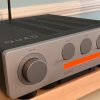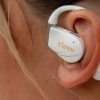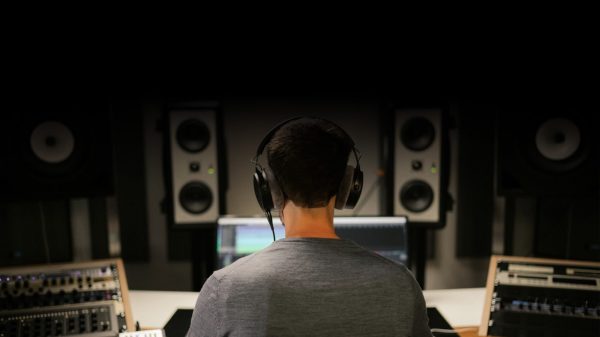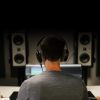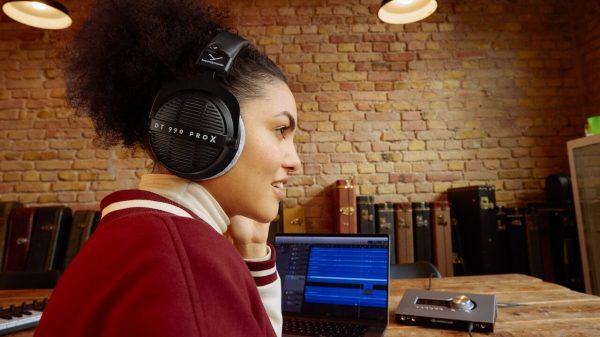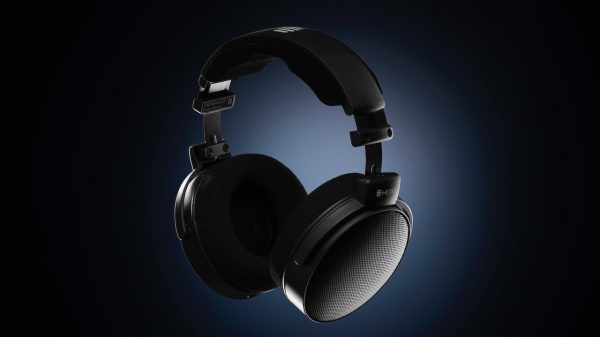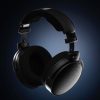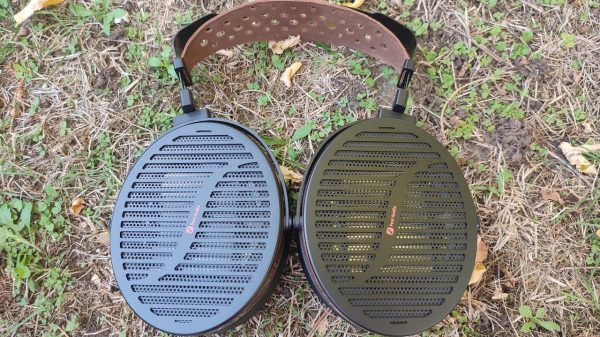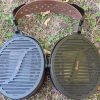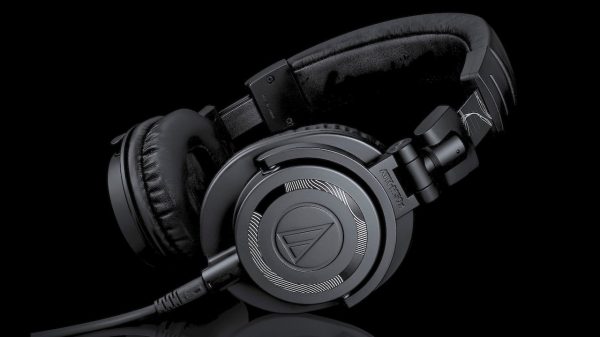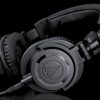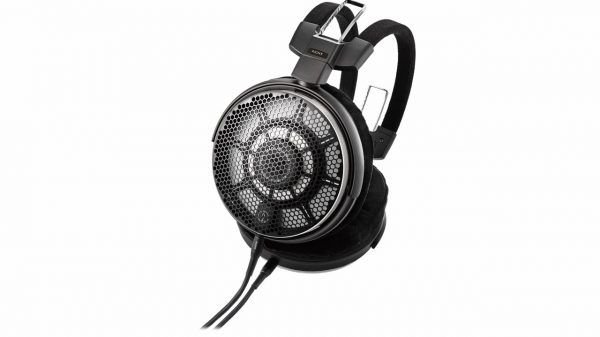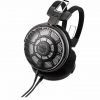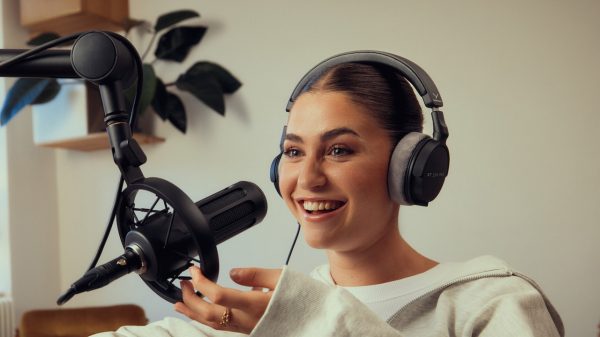For almost a century, Neumann microphones have been utilized in broadcast booths and studios around the globe. World leaders broadcast some of the most important addresses of the 20th century through their products; and there is a very good chance that some of your favorite albums and radio programs were recorded using the Neumann U47 or M49 Series Microphones.
Neumann.Berlin (or Georg Neumann GmbH) have been a fixture in the pro audio world for almost 100 years but only entered the consumer headphone category back in 2019.
Neumann became part of the Sennheiser Group back in 1991 but did not deviate from its core business of microphones, pre-amplifiers, and studio monitors.
The Neumann Closed-Back NDH 20 Headphones were their first product and designed specifically for mastering professionals who required a headphone to match their KH 120 studio monitors.
The NDH 20 provided a very linear sounding tonal balance, good isolation, in a compact design that engineers could take with them to both the studio and other recording venues.
What the NDH 20 couldn’t do was provide a similar soundstage to the KH 120 or other studio monitors. While the closed design was great for isolation, it also limited what engineers could listen for in regard to the soundstage. A number of engineers went back to the company and asked them to develop an open-back pair of studio headphones.
Neumann created the NDH 30 for this group of people. The NDH 30 retains the design, materials, and signature of the NDH 20 but incorporates an open back design instead.
If you examine both the NDH 20 and NDH 30, you might think that the solid metal earcup plate of the NDH 20 was removed and that’s it.
Having spoken to the engineers at Neumann, the internal design is very different and far more complicated.

The Skinny
The unboxing of the Neumann NDH 30 revealed that they are clearly designed for studio use; the cups and frame are manufactured from aluminum and the overall build is designed to handle its fair share of abuse.
The hinges and all stress points are reinforced; there is very little use of plastic and what exists is held in place by high quality hardware for ease of replacement should it become necessary in a few years.
The cable is cloth wrapped and attaches to the right earcup via a recessed 3.5mm port (TRRS 4 pole connector), and is very robust and designed to withstand the rigors of studio life.


Internally, the Neumann NDH 30 uses a 38mm driver with a nominal impedance of 120 ohms and a sensitivity of 104dB (1 kHz/1Vrms).
A friend of mine who has been modifying his NDH 30 headphones (Vitaly Belz) was kind enough to provide me with some internal photos.
The drivers come from Sennheiser, and are marked #528480 which is the same part used in the HD558 and HD598 headphones. Both Sennheiser models have an impedance rating that is considerably lower along with a much higher sensitivity.
This suggests that the Neumann version is utilizing different internal damping and other customizations as well. The drivers used in the NDH 20 and NDH 30 are not the same and there are some additional tweaks to the NDH 30 that alter the tuning somewhat.

Sound
Having previously owned a pair of the Neumann NDH 20s, I had some expectations in regard to what I would likely encounter with the NDH 30; the Neumann sonic signature is much more linear compared to other studio headphones in the market and it would be fair to describe them as slightly lean sounding.
If you used to a warmer, and lusher sounding presentation, the Neumann NDH Series are a rather big departure from that type of headphone.
Remember that these are tuned so that every change on a mixing board is delivered to the ear; what might be perceived as a slightly forward sounding midrange is actually the absence of the typical drop in the midrange that accentuates the bass and treble ranges on most consumer headphones.
All of that is a fancy way of saying that your typical pair of headphones puts more emphasis on the bass and treble because most people react more positively to that type of tuning from a listening pleasure perspective. That doesn’t make them accurate.
Bass notes have good extension and definition but they are most certainly not going to impact you the same way that a bass heavy design might. The NDH 30 deliver bass notes with speed and texture and the focus is on accuracy.
Depending on the source material, you might find them to be rather bass shy — but then you listen to something like Dvořák’s “Symphony No. 9 in E Minor, Op. 95” and suddenly they rattle your teeth.

The lower midrange is recessed slightly from the mid bass which keeps male vocals from sounding too thick or chesty; the timbre is rather accurate but it would be fair to say that they sound somewhat lean in this part of the range compared to some models from Audeze that add some additional color and impact with the same tracks.
The midrange has a mild lift that is accentuated somewhat by the absence of a “V” tuning on either side; this allows strings to come across with excellent clarity and resolution. Piano notes have excellent weight and come across rather naturally.
Female vocals are interesting because they don’t have the typical upper midrange lift that pushes them ahead of the instrumentation with perhaps too much energy and hardness depending on the quality of the recording.
These are not lush sounding headphones so do not expect overly warm sounding vocals that smear detail somewhat. There is a slightly lean quality to female vocals that one can tune with EQ or a warmer sounding amplifier and source.
The treble can come across as being somewhat polite sounding, but don’t let that fool you — really bright sounding recordings will come across that way. These are not headphones that will gloss over poor recordings; there is ample treble extension and airiness which helps with the soundstage depth and width.
Snare rattle is quite good with sharp edges and cymbals have enough energy to sound very natural.
The word natural also defines the soundstage and imaging rather well. The NDH 30 does not deliver the type of cavernous soundstage that you get with the Sennheiser HD800s or the detail retrieval of the Audeze LCD-5, but the proportions in all 3 dimensions make you feel that you are certainly hearing all of the space and it’s very easy to track everyone.
The imaging and soundstage performance are influenced rather significantly by the DAC, source, and headphone amplifier. You will notice any change in the system rather quickly. A warm sounding headphone amplifier will alter the tonal balance adding some body and color to any vocal tracks.

Conclusion
The high-end headphone market is dominated by planar magnetic and electrostatic headphones in 2022, so it is somewhat easy to forget that dynamic driver headphones are still the drug of choice in the studio.
There are a few planar models making some headway in that department but within the studio environment, headphones like the Beyerdynamic DT series, Sony 7506, AKG 240, and Audio-Technica’s ATH-MXX Series are still widely used.
The Neumann.Berlin NDH 30 offer an upgraded level of performance over the aforementioned headphones at a rather affordable price. The tuning will certainly appeal to those who prefer a neutral and accurate tonal balance, combined with excellent speed, clarity, and detail retrieval.
These are well worth checking out if you desire a studio-level pair of headphones that can be tweaked with your DAC and headphone amplifier.
Where to buy: $649 at Amazon
Related Reading:
Beyerdynamic DT 700 Pro X Headphones Review
Beyerdynamic DT 900 Pro X Headphones Review




